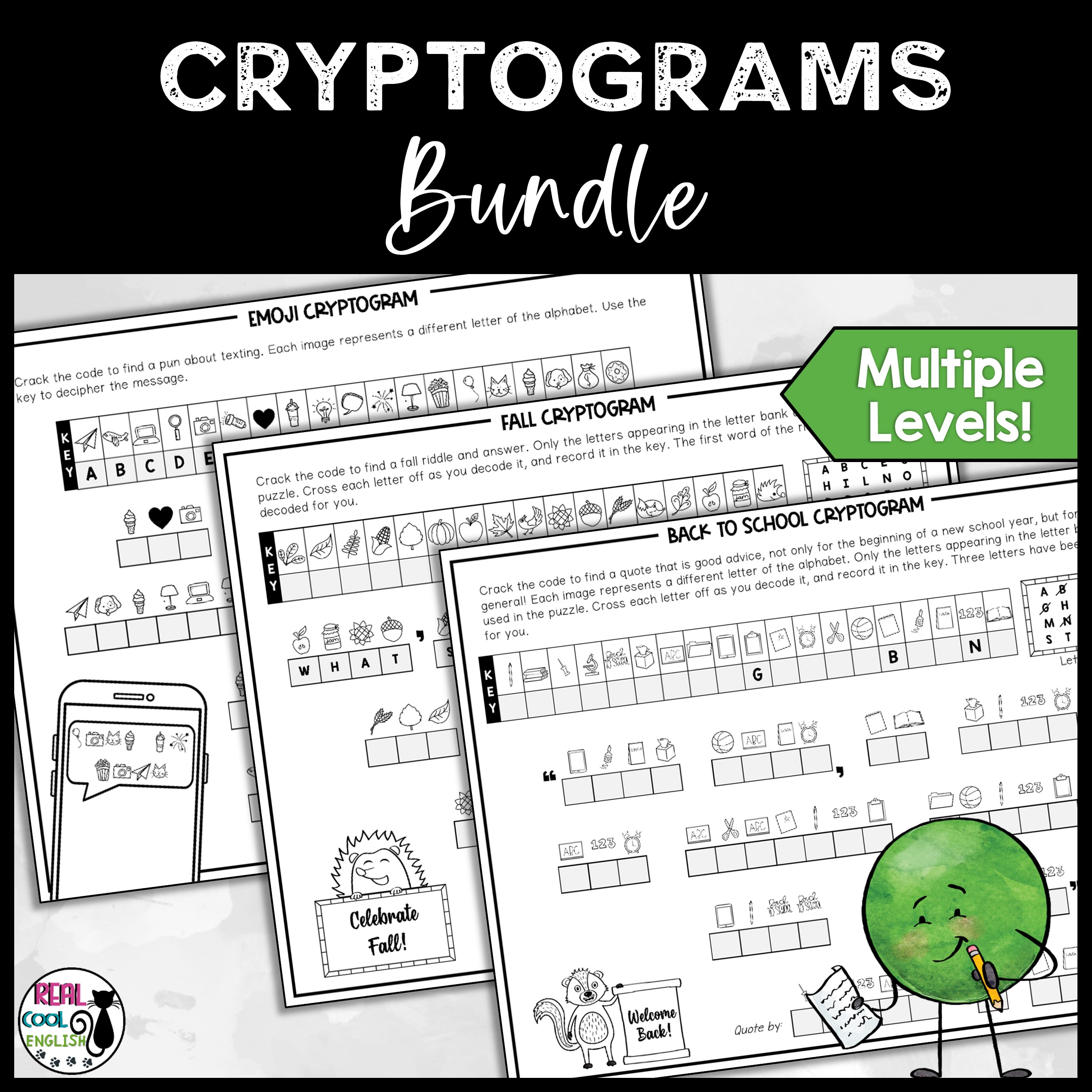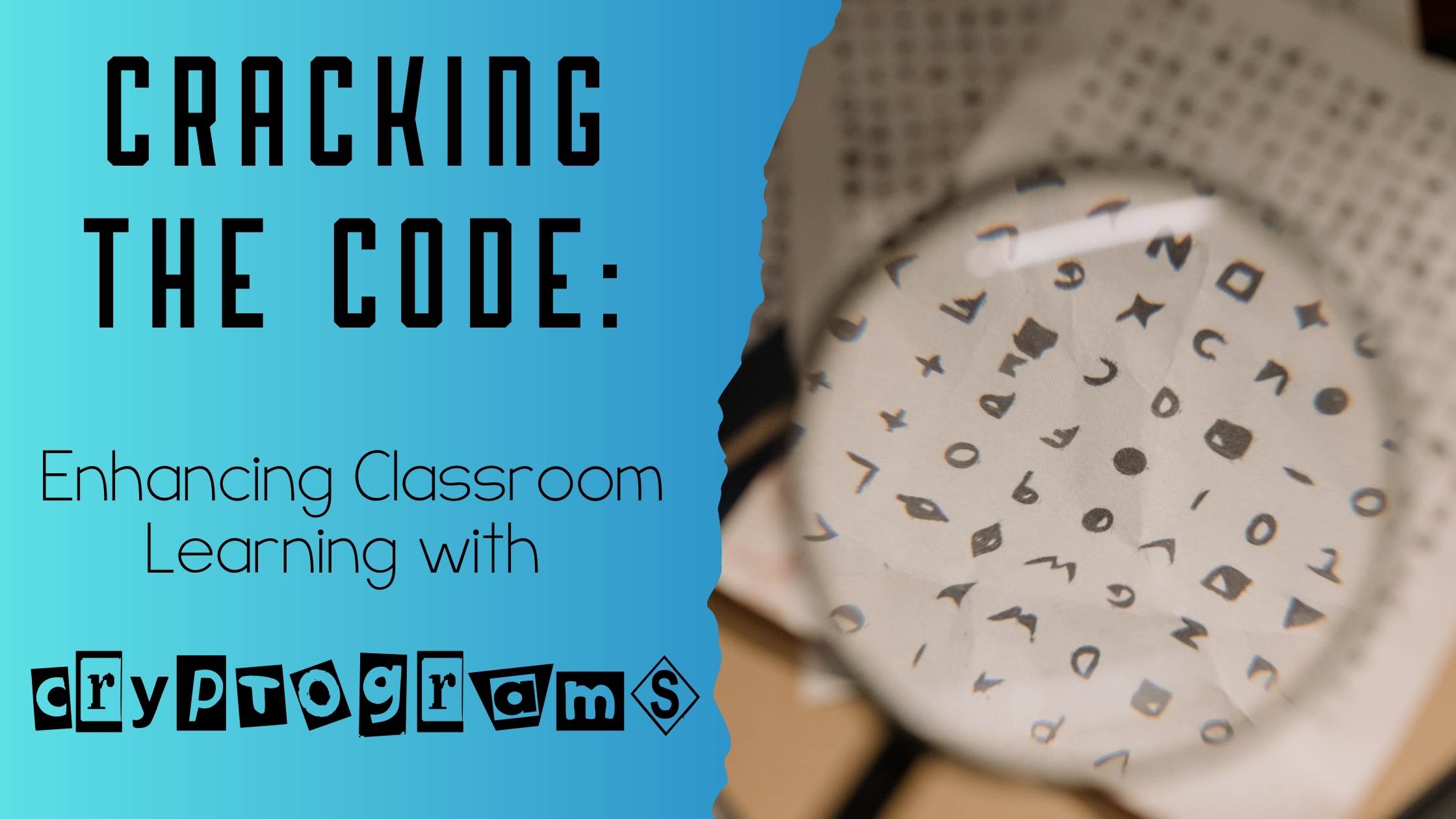
It’s no secret that teaching is not an easy job, and these days, it feels harder than ever to engage students in learning. And it can be particularly challenging to find ways to enhance their critical thinking skills, which is so important for their academic and personal growth. This is why I am constantly trying to find fun and engaging ways to work in activities that can help build critical thinking skills. I love puzzles, and there are so many ways to use them, but one of my favorites is cryptograms. I’d like to share why I love them and the many benefits of cryptograms in the classroom.
Why Cryptogram puzzles?
Everyone loves a mystery.
When students receive a page with a secret code to crack, they are almost always intrigued. They wonder, what are all these letters, numbers, or symbols representing? There’s a mysterious message here, and I want to figure it out! Add even more interest by using emoji, symbols, or interesting images for the secret code. Or try tying it into something that they care about: a message about the class (such as a reward), a funny joke, celebrity quote, etc. If they are invested in the message, they will work even harder to crack the code.
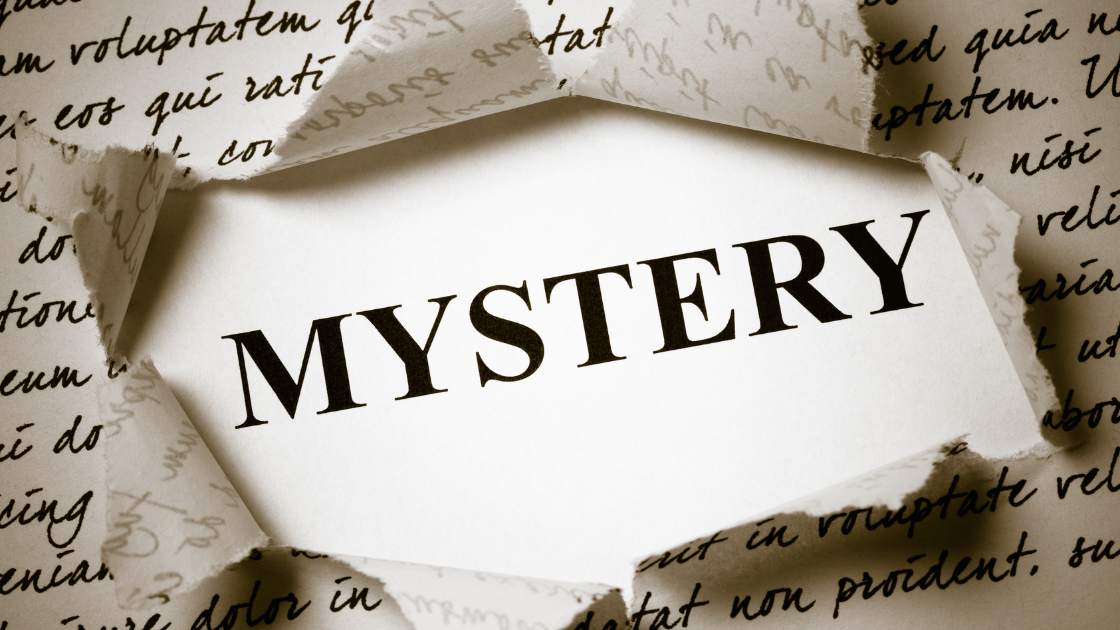
They are a snap to differentiate.
You can take the same cryptogram and use it for just about any class or student. Depending on the message that is to be decoded, it may be very difficult for most students to solve without any clues. However, you may find a few that can really shine with that kind of challenge. For other students, you can adjust the level of difficulty by giving them one, two, three, or more letters decoded. Or you can decode one or two words to make it even easier. If you’re looking for a quick bell ringer, a brain break or early finisher activity, or for younger students, you can give the entire code and just have them transfer the correct letters to the message.
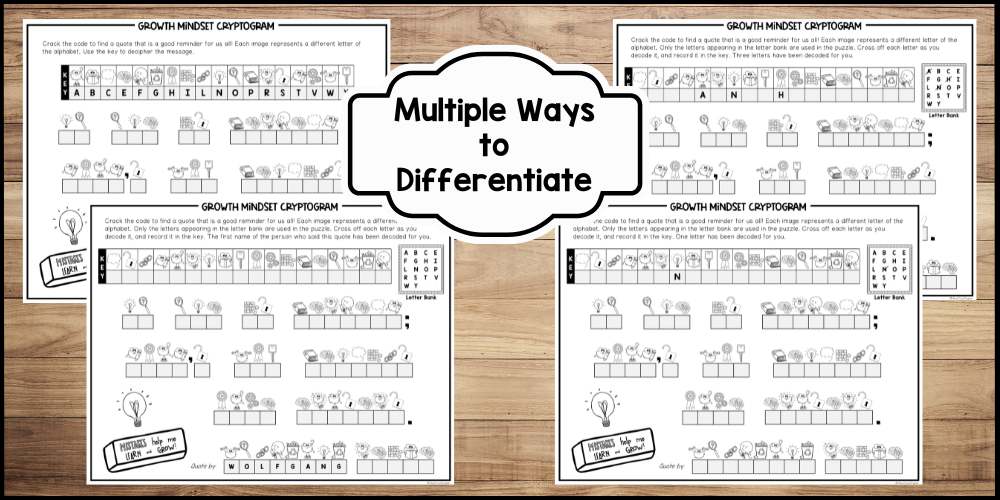
Some of the educational and brain-boosting benefits solving cryptograms can have for your students:
-
Builds spelling skills
As students are working to decipher the code, they are making observations about spelling patterns. Because cryptograms rely on correct spelling, solving them can help students build spelling skills as they notice the patterns of words that they might not have known how to spell correctly.
-
Improves vocabulary
Cryptograms often use uncommon or unfamiliar words that can expand the student’s vocabulary. They will use context clues from the sentence or passage and critical thinking to gain understanding about the unknown words. For language learners, this can be a great way to introduce new vocabulary words and expressions to your students.
-
Reinforces language patterns and sentence structure
Students will use their knowledge of language structure to make decisions when solving the puzzles. For example, if they discover a word that ends in -ing, they might look for a form of BE immediately before the word. Or the word TO followed by a longer word will likely be part of an infinite phrase. Additionally, as they decipher messages, they start recognizing how words are typically arranged in sentences, helping them internalize proper syntax. For language learners, this can be especially helpful as they start to notice the patterns and flow of words in a sentence.
-
Aids in cognitive development and problem-solving skills
Cryptograms can improve memory, focus, and concentration. To solve the puzzle, it’s necessary to pay close attention to details and use their brains in a variety of ways. Solving cryptograms requires students to use logical thinking, deductive reasoning, and trial-and-error to decode the encrypted message. It also requires creative and out-of-the-box thinking. All of this can help develop problem-solving skills that are useful not only in the classroom, but in all areas of their lives.
Cryptograms also have the potential to bridge various subjects. In addition to language and logic, it’s possible to weave in other subjects, such as math or history, allowing you to integrate them all into a single activity. This interdisciplinary approach mirrors real-world problem-solving, where solutions often require knowledge from multiple domains.
-
Helps with relaxation and stress relief
Students often need a break from tasks that they find challenging or tedious. For some, solving cryptograms can be a relaxing activity that can help reduce stress and anxiety. It’s helpful to have a stash of activities available for fast finishers or after state testing that students can choose from as a way to take a break. It’s good to have a variety of types of activities to offer so that there is something fun and relaxing for everyone.

How to incorporate cryptograms into your teaching
-
Start with simple puzzles, and tailor to age and skill level
Adjust the complexity of the cryptograms based on the age and skill level of your students. Start with simple and short messages to decode, and use simple letter or number codes. You may wish to begin with a simple substitution code, where each letter is already decoded, and they just need to transfer the letters directly from the key to the puzzle. This helps build their confidence and familiarity with the code-cracking process. As they become more familiar with the process, try making codes with different characters or images.
-
Use as bell ringers, brain breaks, or fast finisher activities
Secret code activities are perfect for starting the day off with a motivating activity that gets students ready for learning! They are also great for breaking up the day when they’re starting to get a bit sluggish. Have students who are always saying, “I’m done, now what?” Cryptograms are perfect to keep them engaged, while still having them do something meaningful. They also make great back to school icebreakers!
-
Make it a partner or team activity
Organize group-solving sessions where students collaborate to decode the message. This encourages teamwork, communication, and the exchange of different perspectives. You could even make it a competition to see which group can crack the code first. You might even offer small rewards or treats for completing the activity. Working together to solve a cryptogram is also a perfect way to introduce the idea of escape rooms to your class. Many of the same skills of teamwork, problem solving skills, and paying attention to details will apply there as well. There are so many benefits of escape rooms in the classroom, so if you haven’t used them with your students, I encourage you to give them a try as well!
-
Tie it to the curriculum
Integrate cryptograms into relevant subjects. For instance, in literature classes, use quotes from famous books as encrypted messages, prompting students to explore the text’s themes or characters. Introducing a new topic? Make a cryptogram that reveals an interesting fact that will engage them in the topic right from the start.
-
Incorporate holidays and special days
Students love to do fun games and puzzles to celebrate the holidays, and cryptograms are perfect activities for this because they can be tailored to any holiday or special occasion. For the code, use images related to the holiday for added interest. Incorporate them into your holiday party as a way to sneak some learning into the festivities.
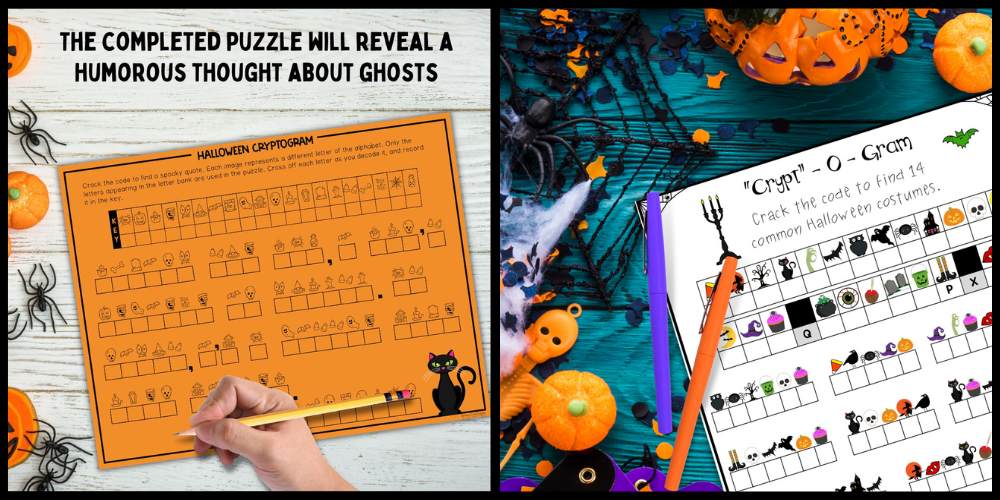
-
Have students create their own cryptograms
This can be a fun and creative choice board activity related to a writing project or a piece of literature they are reading. This is a great way for them to express themselves creatively and connect with the subject they are working on. Have students write a passage, select a quote, etc. and make a cryptogram for it. They can choose images that represent the theme or to reflect their personality. This is a super engaging way to help students take ownership of their learning!
-
Create an out-of-the box writing or discussion prompt
Make it a story starter prompt: create a cryptogram of the first sentence or two in a story and have them solve the cryptogram and finish the story. Or create a cryptogram with a proverb or a quote from a different culture for students to solve and then discuss.
Spice up your lessons with these versatile activities!
The benefits of cryptograms and the possibilities to use them in your classroom really are endless. There are so many ways to incorporate cryptograms into the classroom to teach language, critical thinking, and other important skills. They are a versatile and engaging educational tool that can be used in a variety of ways across different subjects and age groups. An engaging and versatile activity that gets students thinking? I call that a big win!
Grab a free cryptogram to try with your students today!
If you want to see the benefits of cryptograms in your classroom, but you’re not ready to try making your own puzzles just yet, I have some to get you started! This is a growing bundle, which means that you can continue to access the bundle and get updates with all future cryptogram puzzles. If you want to check one out, you can try this free sample.
Have fun using cryptograms in your classroom!
I hope you have found some fresh ideas and fun ways to use cryptograms with your students. If you are looking for more brain-building fun games and activities, you might also want to check these out:
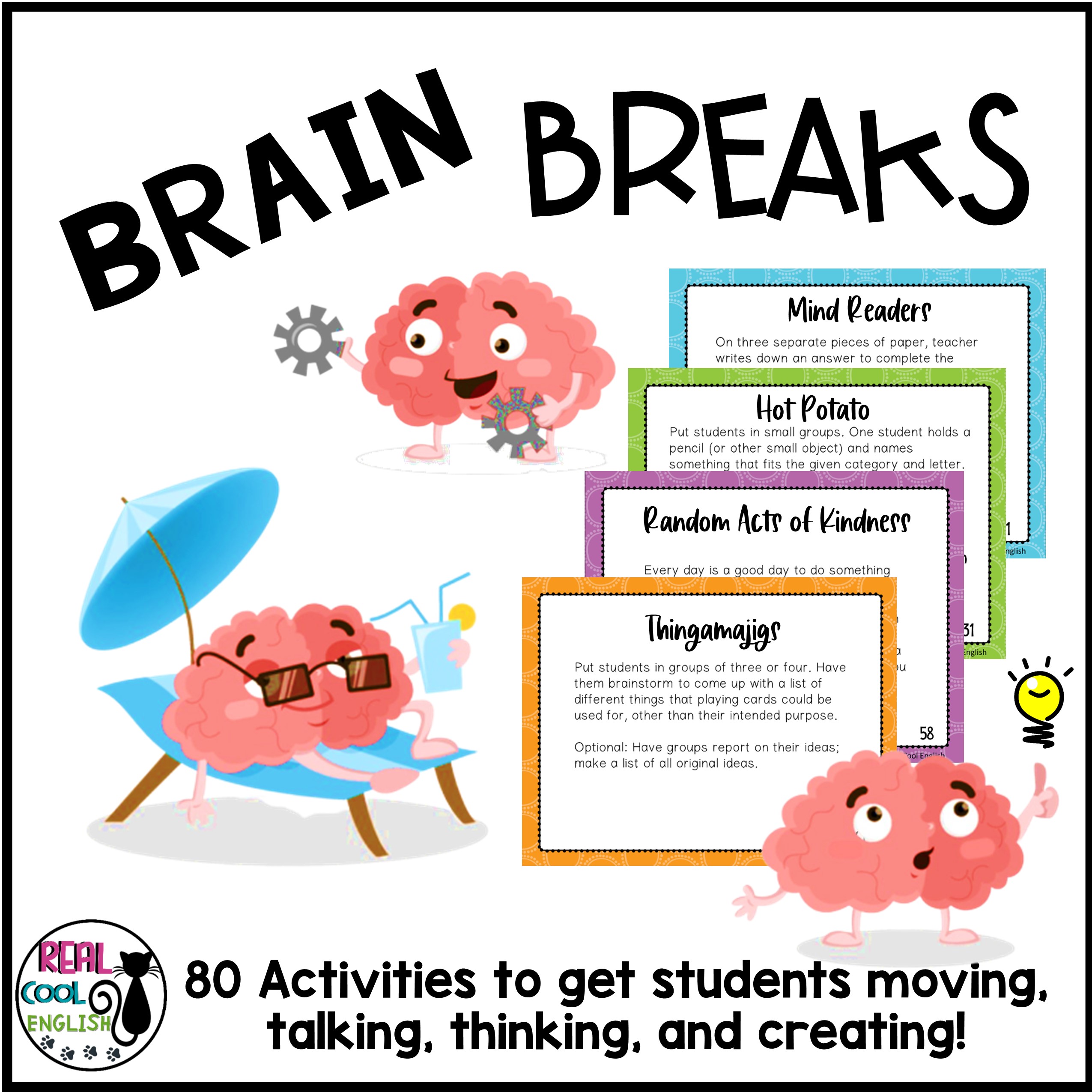 |
 |
 |
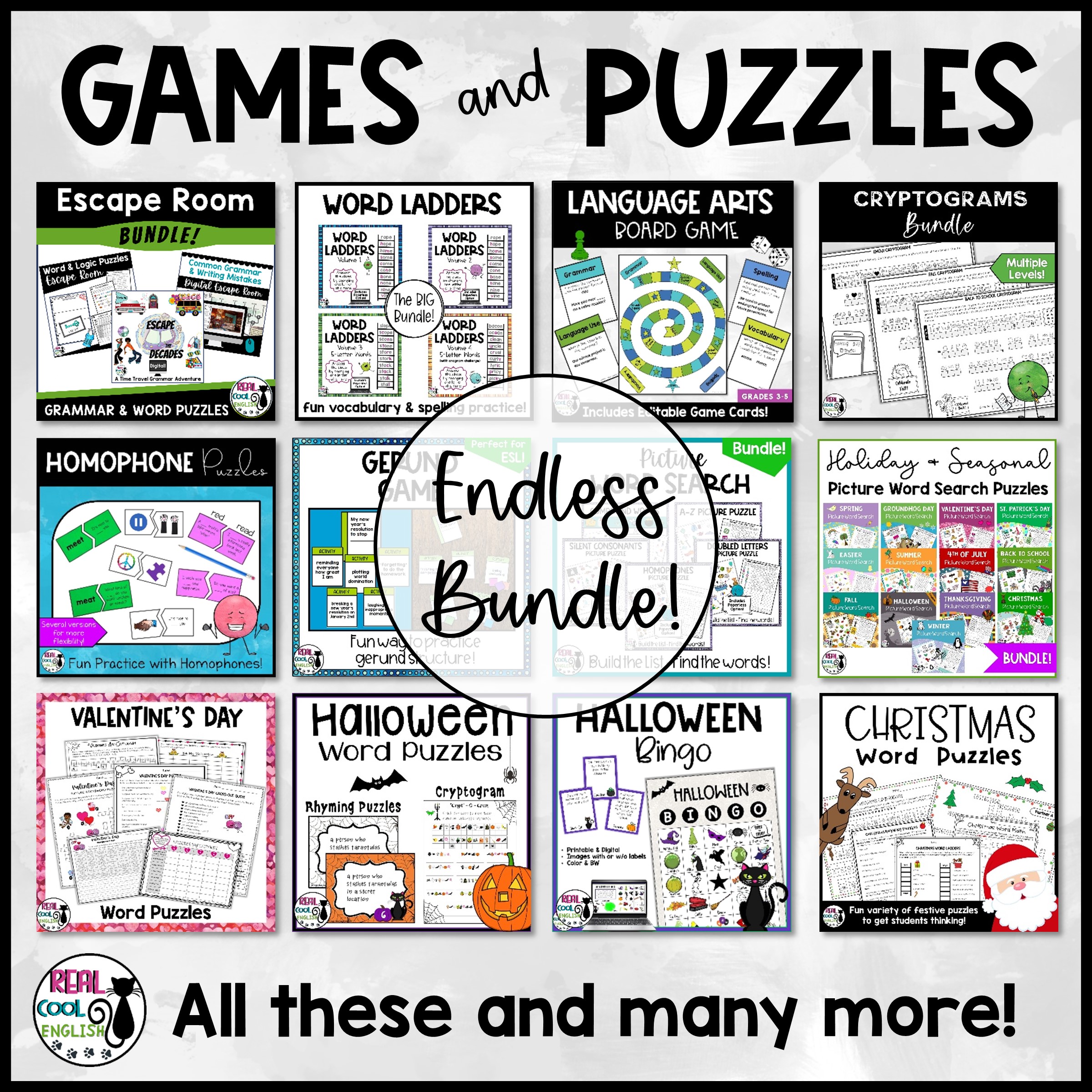 |
